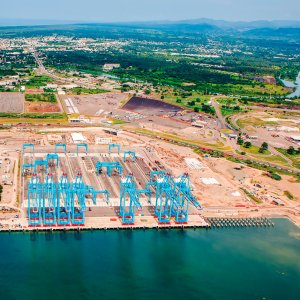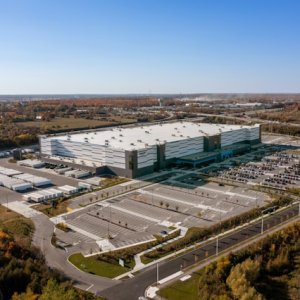Industrial Parks Zero in on Logistics, E-Commerce

STORY INLINE POST
Q: Which sectors will have the most demand for industrial spaces in the coming years?
A: The Mexican manufacturing industry has enjoyed steady growth in the last two years and the vast majority of foreign companies are exporting to the US using Mexico as a logistics platform. The main drivers behind the development of industrial spaces are automotive and aerospace suppliers but there are several sectors that are coming up, including medical devices in the northeast, electronic appliances in the north and distribution centers in the State of Mexico. Distribution and logistics centers require far more sophisticated buildings and services, such as higher roofs, access to trade routes and security systems, especially with the sector’s trend toward e-commerce. E-commerce demands greater processing efficiency, which pushes industrial parks to adapt to those specific needs and create more advanced structures.
Q: How stringent are the quality standards for industrial parks?
A: The Official Mexican Standard (NOM) is a voluntary standard that differentiates industrial development projects from other informal developments. To this day, there is no official description of what constitutes an industrial park in Mexico. Industrial developers have united through AMPIP to create a standard that clearly defines what an industrial park is and what it consists of. In most countries, an industrial park is also equivalent to a free trade zone but in Mexico the majority of the industrial spaces do not have any tax incentives or customs facilitators. They are considered real estate projects.
A committee was created in 1999 that established a standard for industrial parks that included land acquisition and usage, compliance with regulations, feasibility of utilities, internal administration and by-laws. Acquiring and managing land are the biggest hurdles developers face in the construction processes due to the intricacy of negotiating with ejiditarios. For a developer to gain access to the land, 100 percent of the ejido must agree. This requires a land audit, as well as compliance with some basic international standards, such as access to electricity, water and waste infrastructure, the inclusion of a certain percentage of green areas and security protocols.
Q: How can industrial park developers meet the needs of Mexico’s SMEs?
A: The majority of the private companies located in Mexico are SMEs but the industrial parks that form part of AMPIP cater to the needs of medium and large companies. There are several parks that offer spaces to small companies but their business models differ greatly from those of the developers in AMPIP. To create an industrial park, developers need a large initial investment to acquire land, gather permits, urbanize the area and construct a Class A building. This process can go on for more than two years, in which developers do not yet have an income but must still pay taxes, which is why many developers are unwilling to construct for SMEs. Industrial parks also have an intricate financial structure and because the investment has been crucial to the growth of the sector, they require reliable tenants that can guarantee the payment of the lease for many years. Unfortunately, small companies are not always able to give investors this guarantee. That may be the largest factor steering developers away from parks for SMEs.
The National Entrepreneur Institution (INADEM) has always been interested in developing programs for the development of spaces for SMEs but it likely did not receive enough government support.
Q: What problems plague existing state-owned SME industrial parks?
A: State governments usually acquire the land and permits to provide the property to manufacturing SMEs at accessible prices. The state and company then come to an agreement that requires the company to construct its facilities in a short period of time because the government wants to swiftly relocate the industry, usually to the center of a city, to generate jobs. Given that many of the SMEs do not have the capital to comply, these projects are often halted. In the long term, the land remains unused and because there is no central administration, the projects are abandoned. When the government overlooks the role of the developer, the tenant and land are left abandoned. The creation of a central administration is the key to a successful park and these administrations are financed through maintenance fees.























